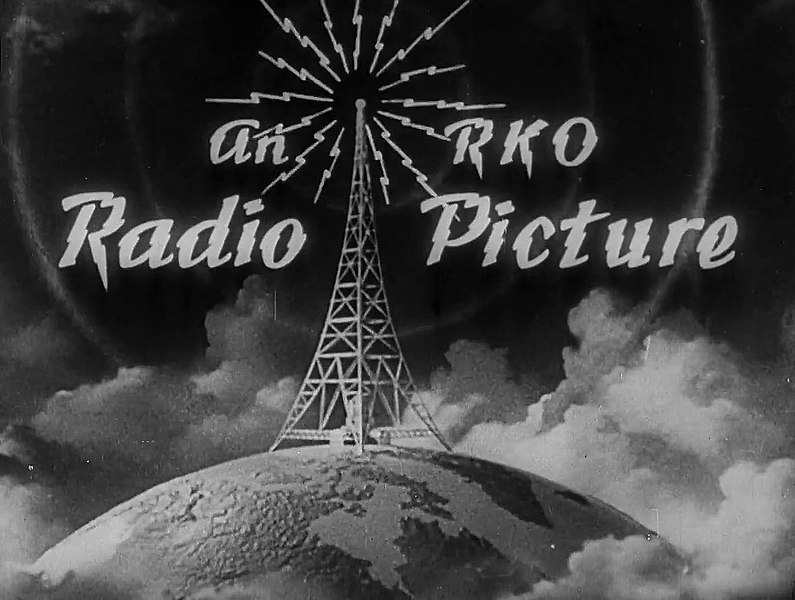Lights, camera, action! For more than a century, the flashy world of cinema has captured viewers by presenting fascinating tales, larger-than-life personalities, and spectacular visual extravaganzas. The legendary movie studios, which were the creative incubators for innumerable cinematic masterpieces, were hidden behind the enchantment of the silver screen. But as the film business has changed over the years, several of these studios have been relegated to history. In this article, we take a trip down memory lane as we explore the halls of fame, paying homage to the iconic film companies that have since passed away but left behind a rich legacy that still motivates future generations of filmmakers and moviegoers.
Even while there has always been a steady fluctuation of production businesses in Hollywood, the loss of certain great studios has left a permanent hole. Once upon a time, these studios were hives of creative activity when visionary filmmakers, gifted performers, and committed staff members brought to life remarkable movies. As we examine the causes of their closures and consider the enduring effects they had on the cinematic world, their absence now serves as a sad reminder of the fleeting nature of the silver screen.
Many studios that once ruled supremely—from the early silent cinema pioneers to Hollywood’s Golden Age and beyond—have unfortunately met their fate. We’ll look into the interesting backstories of a few of these well-known movie-making powerhouses in this article, showcasing their accomplishments, distinctive contributions, and the conditions that eventually contributed to their downfall.
Through their rise and fall, we will witness the transformative power of cinema and pay homage to the cinematic temples that once defined an era. Join us as we travel through time to uncover the mysteries of the past, investigating the tales behind the closing curtains of legendary studios.
So gather your popcorn, take a seat, and get ready to go on a nostalgic journey through the legendary halls of fame as we explore the fascinating histories of illustrious film companies that are no longer in existence.
New World Pictures
The brothers Robert and Gene Corman established New World Pictures as an independent film production and distribution firm in 1970. The studio also started producing television in 1984. When the studio bought seven television stations in 1993, it entered the broadcasting industry. Over the years, New World Pictures has released several movies, and in its early years, it served as the American distributor for a few works by famed Swedish director Ingmar Bergman. Cries and Whispers and Autumn Sonata were both released by the independent studio. The studio experimented with the horror genre in the 1980s with slashers like The Slumber Party Massacre and Children of the Corn as well as the legendary supernatural film Hellraiser. Despite branching out into television in the 1990s, the studio’s film output substantially decreased in the early years of the decade, and it has been inactive since January 1997.
Rankin/Bass Animated Entertainment
You are probably already aware with the work of Rankin/Bass Animated Entertainment if you have ever watched Rudolph the Red-Nosed Reindeer or any other stop-motion Christmas spectacular. During the 1960s and 1970s, the old animation company became well-known for its seasonal TV movies that made use of an innovative method dubbed “Animagic.” The doll-like figures that many of us were raised with as well as the fluffy snow that was present in most of their specials were all part of this unique animation technique. The studio opened in New York City in September 1960, and it ceased operations permanently in March 1987. Although the animation company Rankin/Bass was mostly renowned for its holiday specials, it also produced non-seasonal TV movies. The company produced four TV movies for ABC’s The ABC Saturday Superstar Movie series in the early 1970s.
Film District
Bob Berney and Peter Schlessel created the Los Angeles-based indie studio Film District in September 2010. The studio focused in funding, acquisitions, production, and distribution. Except for Red Dawn, which was released by 20th Century Fox Home Entertainment, all of Film District’s releases were made available on home video through Sony Pictures Home Entertainment. Insidious, directed by James Wan in collaboration with Blumhouse Productions, was the independent studio’s first release. Soul Surfer, Drive, Don’t Be Afraid of the Dark, and the 2013 sequel/reboot of Evil Dead were among the additional releases. Any releases under the moniker Film District were effectively put on hold when the company was acquired by Focus Features in 2014.
The Weinstein Company
The Weinstein Company, once one of North America’s biggest mini-major film companies, was established in March 2005 by brothers Bob and Harvey Weinstein following their exit from Miramax. High-profile or well-liked movies including Inglourious Basterds, Silver Linings Playbook, The Master, Paddington, and many more were produced or distributed by the company. After disgraced Harvey Weinstein was accused of repeated sexual assaults and harassment by more than 100 women, the studio was definitely shut down. Due to this, Weinstein was fired by the firm in October 2017. Financial difficulties ultimately developed, and the company filed for Chapter 11 bankruptcy in February 2018. The majority of TWC’s film assets and library were purchased by the independent company Lantern Entertainment. Lantern Entertainment updated Spyglass Media Group in March 2019 and granted Spyglass access to their film library. The majority of TWC’s collection was then sold to Lionsgate as part of an acquisition agreement by Spyglass in 2021. Now that Weinstein has been found guilty of sex crimes, he is incarcerated for 23 years at the Mohawk Correctional Facility in upstate New York.
Blue Sky Studios
Blue Sky Studios, best known for the Ice Age series, was established in 1987 by former workers of MAGI, the Tron visual effects firm that went out of business. Before deciding to focus only on filmmaking, the Greenwich, Connecticut-based computer animation company used internal rendering tools to produce the visual effects for commercials and movies. Ice Age was in fact Blue Sky’s first full-length picture when it was released in 2002, and the company went on to produce 12 more movies before ceasing operations in April 2021. In addition to the five Ice Age movies, the company also produced animated pictures geared for families, such as Robots, Epic, and Rio. Since Blue Sky Animation was a part of 20th Century Fox, the latter handled the distribution of the studio’s movies on the big screen. The Walt Disney Company’s purchase of 20th Century Fox allowed Blue Sky to shut in 2021; the COVID-19 pandemic’s economic impacts have been mentioned as the rationale.
Warner Bros. Family Entertainment
Under the moniker Warner Bros. Family, Warner Bros. established a distinct family branch in 1992. Entertainment for families. More family-friendly movies and television programs would be created with the intention of keeping them isolated from the rest of the Warner Bros. library. Dennis the Menace, which brought in more than $50 million domestically in 1993, was the division’s first movie to be seen in theatres. Films like Free Willy, The Secret Garden, My Dog Skip, The Iron Giant, and Space Jam, which are all beloved family favourites, were produced by WBFE. A Troll in Central Park, The Pebble and the Penguin, and Thumbelina are just a handful of the box office duds produced by the now-defunct firm. By the 2000s, WBFE had begun to gradually cut back on the quantity of movies they were producing. Before closing in 2009, they produced one last movie, the German animated feature Laura’s Star and the Mysterious Dragon Nian.
Trimark Pictures
Mark Amin formed Trimark Pictures in 1984 with Vidmark Inc. serving as the studio’s parent company. Trimark Pictures was formerly known as Vidmark Entertainment until 1989. Before releasing their debut movie in theaters in 1989, Trimark originally released a few of straight-to-video movies. Going Overboard, its first theatrical release, starring Billy Bob Thorton in a supporting role and marked Adam Sandler’s acting debut. The company was renowned for producing movies that were at the time viewed as being controversial, such as Peter Jackson’s awful zombie picture, Braindead. Trimark and Lionsgate combined in March 2001, preventing the company from putting out more movies.
Dimension Films
The dishonorable Weinstein brothers founded Dimension Films as a genre film subsidiary under Miramax; after they departed, it eventually became a part of TWC in 2005. The company is most known for distributing the Spy Kids movies, however it primarily made independent movies with a concentration on horror and sci-fi. In addition to the original four Scream films, Dimension also released a significant number of the Halloween, Hellraiser, and Children of the Corn films. In addition, it published a few comedy, including Bad Santa and Jay and Silent Bob Strike Back. When TWC declared bankruptcy and sold its assets to Lantern Entertainment, ViacombCBS bought the rights to over half of Miramax’s productions, including movies from the pre-2005 Dimension era, in 2019. The studio no longer produces films; it only remains a legal entity in name to protect the copyrights of its collection and films from before 2005.
Touchstone Pictures
A label for its film branch, Walt Disney Studios, Touchstone Pictures was created by The Walt Disney Company in 1984. Disney often targeted to a younger population of children, whereas Touchstone’s mission was to house more intellectual films that were geared for adult audiences. Walt Disney Studios sponsored each and every Touchstone film; as a result, the studio exclusively produced mature films under the Touchstone banner. The label’s first film was the fantasy rom-com Splash, starring Tom Hanks and Darryl Hanna.
Many renowned movies were distributed by Touchstone, including Martin Scorsese’s The Color of Money, Wes Anderson’s The Life Aquatic with Steve Zissou, and the Robin William-starring Good Morning, Vietnam. Many of Scorsese’s movies, like Gangs of New York and Bringing out the Dead, were really made by the company. In 2009, Disney and DreamWorks Pictures signed a five-year, thirty-movie distribution agreement in which DreamWorks films will be released under the Touchstone label. With Touchstone’s last movie, The Light Between Oceans, the agreement came to an end in 2016, and by 2017, Disney had made the decision not to continue operating the business.
RKO Radio Pictures
RKO Radio Pictures, sometimes known as RKO Pictures or just RKO, was one of the original “Big Five” American film studios during the Hollywood Golden Age. MGM, Paramount, Fox (now 20th Century Fox), Warner Bros., and RKO Pictures made up the Big Five. RKO is the only one of the five major studios that is no longer in operation. The studio was established after the Radio Corporation of America brought together the chain of Keith-Albee-Orpheum theaters and Joseph P. Kennedy’s Film Booking Offices of America studio in 1928, with actual production starting in 1929 under RKO.
Some of the biggest artists from the Golden Age called RKO their home and the company was recognized for its musicals. Actors in Hollywood at this time signed contracts with studios to keep starring in their films, thereby making them the public face of these businesses. Among the popular RKO stars were Katharine Hepburn, Fred Astaire, and Ginger Rogers. Cary Grant was another major draw for the company, appearing in many of the renowned screwball comedies that RKO later came to be known for. The well-known company created some of the greatest movies ever, such as Citizen Kane and the original 1933 King Kong. Even in the 1920s and 1930s, RKO released a lot of Walt Disney’s early movies. The General Tire and Rubber Company acquired RKO in 1955, following about seven terrible years under Howard Hughes’ rule. General Tire declared in 1957 that it would close RKO after two years of attempting to turn around the studio. RKO was finally shut down in 1959.
Lotus Pictures
A notable film production company called Lotus Pictures thrived in the early years of the silent cinema era. It was established in the early 1900s and immediately rose to fame for its productions, which were both artistically magnificent and emotionally compelling. Without the use of conversation, Lotus Pictures was renowned for its inventive storytelling methods and capacity to generate strong emotions. The studio was known for its enthralling stories, which frequently included elaborate sets, captivating costumes, and revolutionary visual effects for the time.
Lotus Pictures, on the other hand, found it difficult to adapt when the movie business moved into the sound age. The studio’s focus on silent narrative made it difficult for it to compete with newly developed sound technology and films with speech. Lotus Pictures failed to replicate its prior success despite efforts to include sound in its works. The studio was ultimately shut down in the late 1920s as a result of financial issues and shifting consumer tastes. However, Lotus Pictures’ history persists because it serves as a reminder of the creative accomplishments and difficulties experienced by pioneers in the film business.
Marlwood Studios
In the early days of Hollywood’s golden era, Marlwood Studios rose to prominence and became known as a hub of technical brilliance and creative strength. The company, which was established in the 1930s, had a reputation for making aesthetically gorgeous movies that pushed the frontiers of cinematic art. Marlwood Studios was renowned for its amazing attention to detail, elegant production designs, and the capacity of its innovative narrative to carry viewers to exotic places.
Marlwood Studios made contributions to a wide spectrum of genres during the course of its existence, from sweeping historical dramas to playful fantasy adventures. A skilled cast of directors, performers, and crew members worked together at the studio to provide captivating cinematic experiences for viewers all around the world. However, Marlwood Studios found it challenging to keep up as the film business developed and adopted new technologies. The studio experienced financial challenges as a result of the popularity of television and the evolving interests of consumers.
Despite its distinguished past, Marlwood Studios finally gave in to the demands of the business and was forced to shut its doors for good in the late 1960s. As a reminder of Hollywood’s glory days, Marlwood Studios stands as a testament to the creative heights attained during a period of unmatched elegance and cinematic creativeness.
Stellar Productions
The movie company Stellar Productions, whose name once inspired dread and esteem, ruled supreme in the middle of the 20th century. With its ambitious initiatives and unmatched dedication to quality, Stellar shows, known for its spectacular shows and dazzling visual spectacles, attracted the attention of viewers. The enormous scope, painstaking attention to detail, and ground-breaking special effects of the studio’s movies set them apart.
Producing famous movies that had a lasting impact on culture, Stellar Productions was essential in the making of several cinematic classics. Stellar Productions continuously pushed the horizon in terms of technological innovation and storytelling prowess, producing everything from grand historical epics to science fiction adventures that stretched the limits of imagination.
Nevertheless, despite its success, Stellar Productions had growing difficulties as a result of shifting market conditions and heightened competition. The studio’s ambitious strategy faced considerable obstacles with the rise of independent filmmakers and the trend toward more personal, character-driven stories. In the end, the studio’s dissolution was also linked to financial difficulties and a changing cultural landscape.
The gradual closing of Stellar Productions in the late 1980s signalled the end of an era characterised by splendour and performance. The company’s legacy, however, lives on, staying ingrained in the memories of movie fans and acting as a reminder of its significant contributions to the world of filmmaking.
Conclusion
The growth and fall of well-known studios that are no longer in operation serves as a sobering reminder of the fleeting nature of success and the difficulties even the most venerable organizations encounter in the constantly changing environment of the film business. Each studio made a distinctive addition to the cinematic universe, from the enchanted realm of New World Pictures to Stellar Productions.










